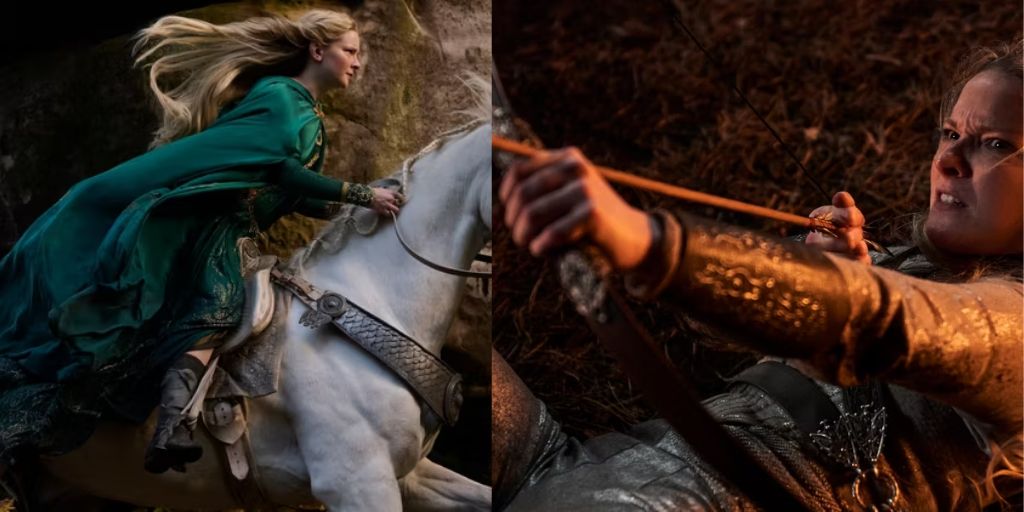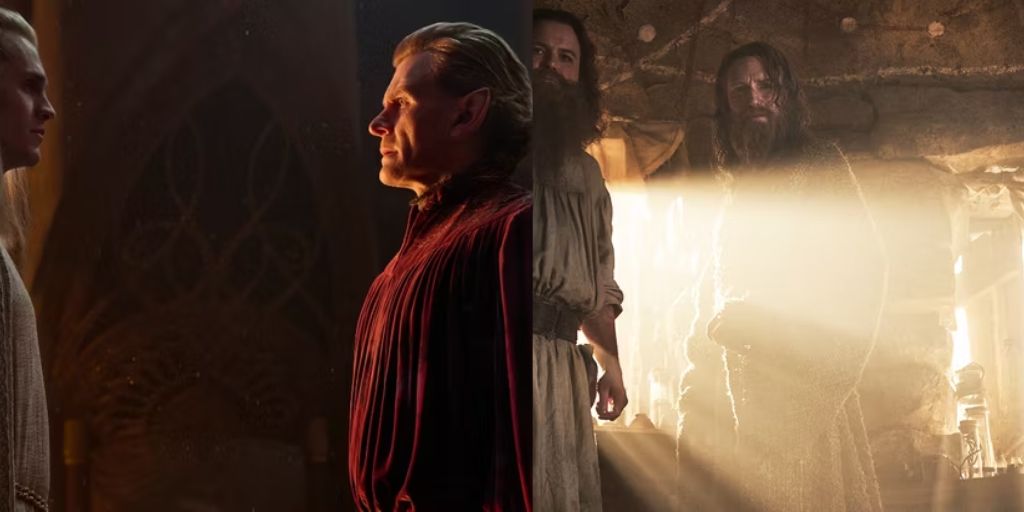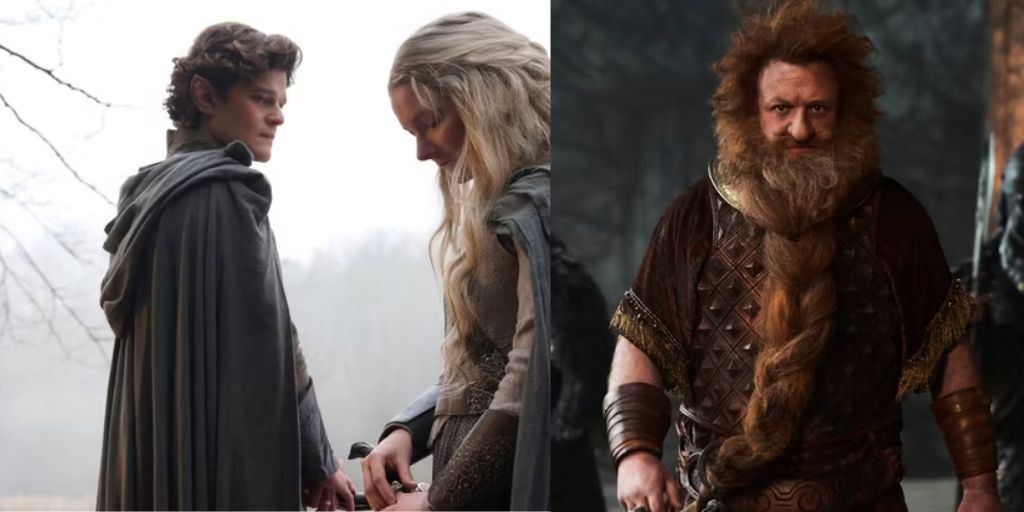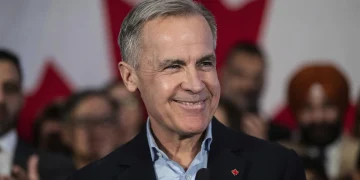When The Lord of the Rings: The Rings of Power first premiered nearly two years ago, it was set to expand on the Middle-earth world in ways even Peter Jackson’s films might have missed. The series, created by J.D. Payne and Patrick McKay, is adapted from J.R.R. Tolkien’s appendices for his Lord of the Rings novels.
It successfully introduced younger versions of characters like Galadriel (Morfydd Clark) and Elrond (Robert Aramayo). It also brought to life kingdoms such as Númenor and Khazad-dûm, showing them at their peak even as their futures were hinted at. Composer Bear McCreary’s music followed Howard Shore’s original film themes, continuing with the upcoming second season.
Season 2 of The Rings of Power maintains many of its strengths, but also shows some weaknesses. The season’s large cast covers more of Middle-earth, but the plot often feels disjointed.
Key elements, like Sauron’s (Charlie Vickers) actions in Eregion and his manipulation of Elven-smith Celebrimbor (Charles Edwards), don’t build up as effectively as they should before the dramatic climax.
The looming threat beneath Khazad-dûm seems less menacing compared to the rising tensions between Prince Durin (Owain Arthur) and his father (Peter Mullen). The season feels stagnant outside of elf and dwarf storylines, with many characters either sidelined or only participating in a part of the larger action.
What Is ‘The Rings of Power’ Season 2 About?
By the end of Season 1, viewers, along with Galadriel, discover that her greatest enemy, Sauron, is also her new ally, Halbrand. This twist, though predictable, is still shocking. Even with this knowledge, Galadriel is reluctant to reveal Sauron’s manipulations to the other Elves. Meanwhile, Celebrimbor continues to forge the first three Rings of Power in the season’s finale.

Season 2 begins with Elrond believing the Rings should be destroyed, but it’s too late. Gil-galad, High King of the Elves (Benjamin Walker), has agreed to their use, leading to a conflict between Elrond and Galadriel.
Elrond seeks advice from Círdan (Ben Daniels), a skilled shipbuilder, while Galadriel struggles with her connection to Sauron through the Rings. Sauron, now in disguise, is already working with Celebrimbor to make more Rings.
In Khazad-dûm, Durin is struggling after being disowned by his father, the king. He and his wife Disa (Sophia Nomvete) face financial constraints but are still determined to help their kingdom.
Meanwhile, Harfoots Nori Brandyfoot (Markella Kavenaugh) and Poppy Proudfellow (Megan Richards) travel to Rhûn with their friend, the Stranger (Daniel Weyman), to learn about his powers and true identity.
On Númenór, Pharazôn (Trystan Gravelle) seeks to overthrow Queen Míriel (Cynthia Addai-Robinson). The political conflict affects even family members like Elendil (Lloyd Owen) and his daughter, Eärien (Ema Horvath). After the eruption of Orodruin, survivors Theo (Tyroe Muhafdin) and Arondir (Ismael Cruz Córdova) try to settle in Pelargir, facing new dangers.
‘The Rings of Power’ Season 2 Prioritizes Some Characters at Cost to Others
Season 2 of The Rings of Power deals with many storylines across eight episodes, which might feel overwhelming. The season’s length doesn’t always benefit the show. With such a large cast, some characters end up underdeveloped.
Important plots like the creation of the Rings and the fall of Eregion are well-structured. Vickers’s portrayal of Sauron’s deceit and Edwards’s role as Celebrimbor are strong, and the conflict between Galadriel and Elrond adds depth to their characters. Orcs, led by Adar (Sam Hazeldine), are portrayed with more complexity than in the Jackson films, and Durin’s emotional struggle is compelling.
However, some characters seem to stall while others push the main conflicts forward. The Harfoots’ journey through Rhûn feels slow, and Tom Bombadil (Rory Kinnear) doesn’t add much whimsy as expected. Ciarán Hinds’s Dark Wizard has potential but lacks significant development.

Theo, who had a bigger role in Season 1, is reduced to a minor character this season. Arondir’s storyline shifts to Eregion but misses out on deeper character development. The Númenórean subplot feels isolated and less engaging, with Pharazon’s quest for power only briefly touched upon.
‘The Rings of Power’ Season 2 Shines Most Through Middle-earth’s Darkness
Season 2 continues to show the theme of darkness from Season 1, starting with a prologue that shows Sauron’s previous form and how he ends up as Halbrand.
This establishes Sauron’s deep-rooted evil and hints at his great power. The early episodes feel like a horror film, with the audience watching as Sauron’s evil unfolds. The season’s climax, featuring a major battle at Eregion, rivals the scale of previous epic battles.
Despite the darkness, there are moments of hope and important character revelations. The series remains true to Tolkien’s themes, showing that darkness can be overcome by light. As Season 2 ends, questions remain about who will survive and how the series will continue.
With plans for a potential Season 3, the show’s creators seem to understand Tolkien’s core messages and what should ultimately triumph. Future success might depend on focusing on fewer characters and scaling down rather than constantly trying to outdo previous seasons.
Season 2 of The Rings of Power continues to impress with its stunning visuals and complex characters, but it struggles with pacing and character focus. The epic conflicts and character dilemmas keep the story engaging, though some subplots feel underdeveloped or stalled.

The season’s portrayal of darkness and its impact on Middle-earth remains compelling, with a strong emphasis on the ongoing battle between light and shadow.
As the series moves forward, refining its focus on fewer characters and tightening its narrative could enhance its impact. With a potential third season on the horizon, fans can anticipate further shown of this richly imagined world.
The Lord of the Rings: The Rings of Power Season 2 premieres with its first three episodes on August 29, exclusively on Prime Video.





